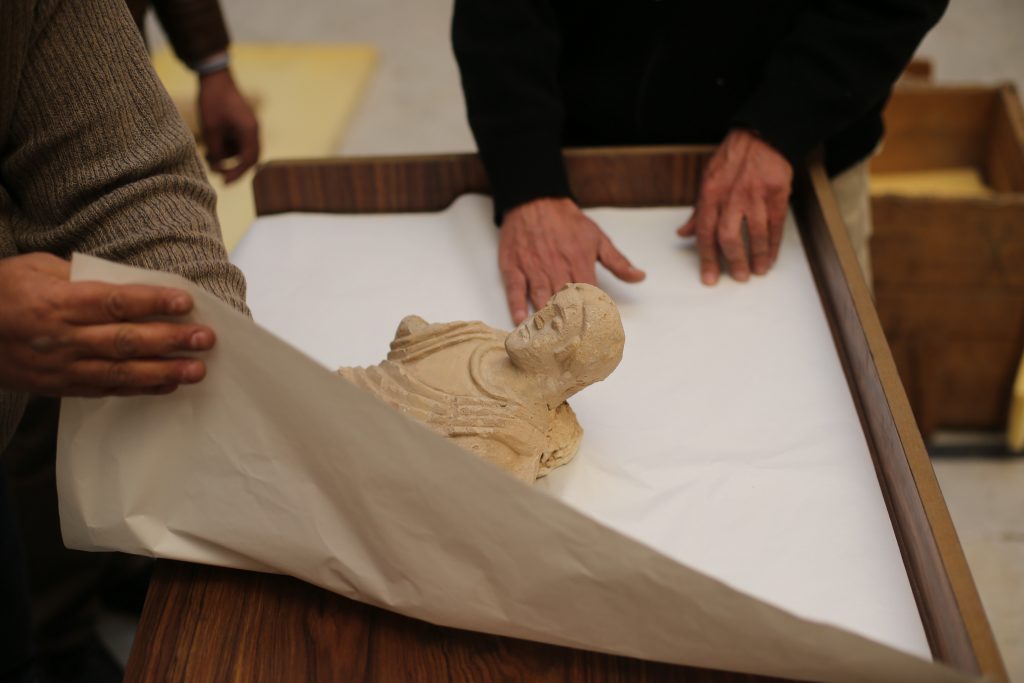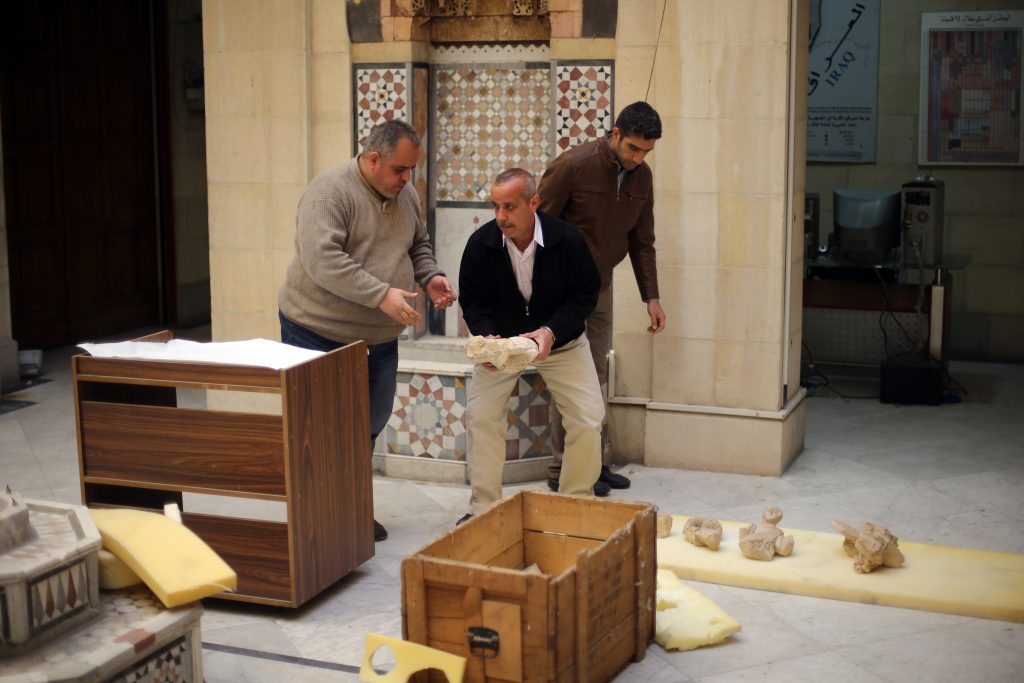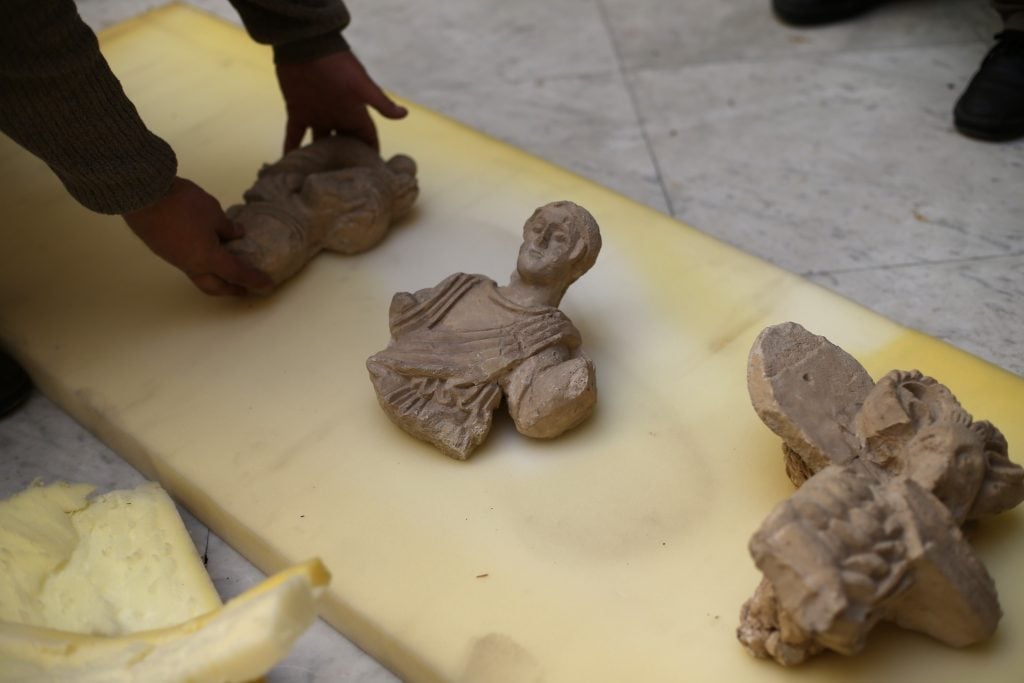Art World
Syria’s Top Museum Hides 300,000 Artifacts to Protect Them From Looting


Henri Neuendorf

Museum staff at Syria’s National Museum of Damascus have been working overtime to evacuate the institution’s collection of priceless antiquities, Agence France Presse reports.
Under the direction of the museum’s head of antiquities Maamoun Abdulkarim, appointed in the middle of Syria’s civil war, approximately 300,000 artifacts and manuscripts from 34 museums have been wrapped and transported to secret locations for safekeeping.
When he took the post three years ago, Abdulkarim quickly prioritized the prevention of looting to stop the large-scale thefts that Iraq’s museums suffered in the aftermath of the US invasion in 2003.
“The images of the looting of the museum in Baghdad and other Iraqi sites are always on my mind, and I told myself that everything must be done to avoid a repeat of that here,” he told AFP.

Damascus Museum employees wrap archaeological artifacts into boxes to protect them from being damaged on March 24, 2015, in the Syrian capital. Workers at Syria’s National Museum of Damascus carefully wrap statues and place them in boxes to be transported to a safe place, hoping to save the priceless pieces from theft or destruction. Photo by Joseph Eid /AFP via Getty Images.
The rise of ISIS in Iraq and Syria has significantly intensified the situation. Some 2,500 museum employees work tirelessly to preserve their cultural heritage. Many risking their lives in opposition-held areas. Twelve staff members have already given their lives to protect historical artifacts.
“They feel that protecting our heritage is a question of honor,” Abdulkarim said, “like defending the honor of their mothers.”

Damascus Museum employees wrap archaeological artifacts into boxes to protect them from being damaged on March 24, 2015, in the Syrian capital. Workers at Syria’s National Museum of Damascus carefully wrap statues and place them in boxes to be transported to a safe place, hoping to save the priceless pieces from theft or destruction. Photo by Joseph Eid/AFP via Getty Images.
He estimates that 99 percent of Syria’s museum collections have been rescued so far. But Abdulkarim’s work is far from over.
Almost 300 sites and historic buildings have been damaged or destroyed, and illegal excavation and fighting continue to endanger the region’s heritage